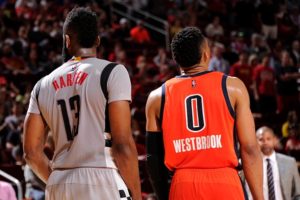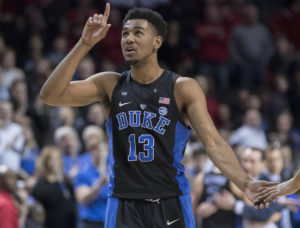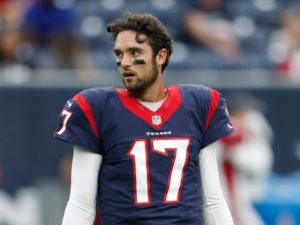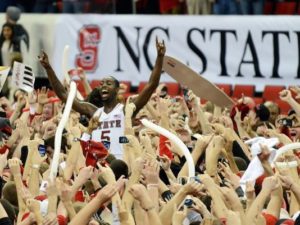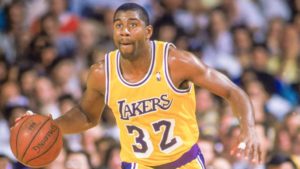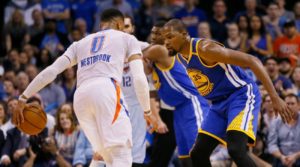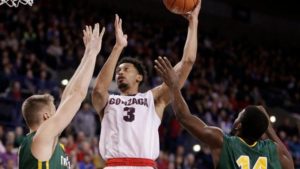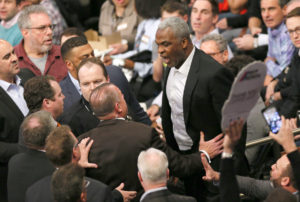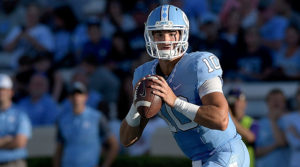
If you think you’re having a bad week, consider this: an NFL team may risk everything next week and draft a quarterback in the first round.
To be fair, a team may draft a quarterback and make it work. After all, I’ve been wrong before. But the organization that pulls the trigger first on its franchise QB in round one better be right. If not, they could be setting themselves back for the next five to ten years. It’s sports’ equivalent of Russian Roulette, and sometimes, it’s even more of a life-or-death game.
For a look at all the teams who may be looking for a quarterback early in the draft, we must obviously start with the team that has needed one as long as I’ve been alive: the Cleveland Browns. The Browns have the first and twelfth overall selections in the draft and it would make perfect sense for them to try to trade up from the latter spot. There was a buzz in the league last week when ESPN’s Adam Schefter reported that Cleveland is torn between Texas A&M defensive end Myles Garrett and North Carolina quarterback Mitchell Trubisky with the #1 pick. Trubisky started for one season at North Carolina and threw for 3,748 yards, 30 touchdowns, and just six interceptions. Garrett was a three-year starter at Texas A&M and looks like one of the best defensive prospects to come into the draft in a very long time. Charley Casserly, who knows a thing or two, says that Garrett is the best defensive prospect he’s seen in fifteen years. Your choice, Cleveland. Of course, the Browns could be conjecturing to get a Godfather offer for the first pick. I’m going to sincerely hope that’s what’s really going on here.
There are other teams who could potentially take a quarterback early in round one. The 49ers sit with the second pick but may trade back for more picks later in the draft. The Bears have the third pick but they signed Mike Glennon to an absurd $15-million-per-year deal earlier in the offseason and probably aren’t looking at a quarterback. The team we turn to next, then, is the New York Jets.
Bypassing the Titans and Jaguars, neither of whom should be looking seriously at a quarterback in the first five picks, the Jets represent the most likely team to fall for the QB ruse. After all, this is the team that once fell for Johnny “Lam” Jones. And Roger Vick. And Kyle Brady. And Blair Thomas. And Vernon Gholston. And Mark Sanchez. The list goes on and on.
But just remember this: GM Mike Maccagnan and coach Todd Bowles are likely in make-or-break years after last year’s 5-11 trainwreck that saw the Jets’ five wins come against four different teams with 18 wins between them. If you’re new to the NFL or mathematics, that’s not good. Drafting Trubisky, most likely the first quarterback to go off the board in this year’s draft, would be a last-ditch effort at saving both of their jobs. Incompetence, desperation, and the Jets’ needs are meeting in the exact same place. This never ends well. The Jets actually have needs at most of their positions, so drafting a quarterback makes little to no sense for them. But, if Trubisky is still available at six, don’t be stunned if the Jets pounce.
Of course, part of the Jets’ current problem is ownership. Team owner Woody Johnson will soon turn over day-to-day control of the organization to his brother once he is officially appointed as President Trump’s ambassador to Great Britain, a move that was reported as early as mid-January. It remains to be seen what attitude (and how much patience) Johnson’s brother, Chris, will have with the team. Crazy as it sounds, that may dictate what the Jets do with the sixth pick, and whether or not Bowles and/or Maccagnan are in their current roles at this time next year.
But then, there’s this: if Trubisky (or any other quarterback, i.e. DeShaun Watson, DeShone Kizer, or Patrick Mahomes) bombs in the NFL, the team that drafts him, particularly if they do so in the first round, will face major consequences.
In 2002, the expansion Houston Texans, the NFL’s equivalent of the state of Hawaii, were making their first pick in franchise history at the very top of the draft. They had a choice between North Carolina defensive end and basketball standout Julius Peppers and Fresno State quarterback David Carr. Houston’s general manager who, ironically, was Charley Casserly, chose Carr. It took the expansion Texans ten years to make their first playoff appearance; granted, part of the problem was Peyton Manning’s unwavering presence in the AFC South, but another significant part of it was the selection of Carr over Peppers. Two years later, Houston took South Carolina corner Dunta Robinson with the tenth pick in the draft. With the next pick, the Steelers took Ben Roethlisberger. To say that Casserly speaks from a place of experience on Myles Garrett is an understatement.
In 2007, the Oakland Raiders possessed the first overall pick and had a choice between LSU quarterback JaMarcus Russell, Georgia Tech wide receiver Calvin Johnson, and Wisconsin offensive lineman Joe Thomas. You know how that went. Thomas is still in the league and Johnson may be enshrined in Canton in a few years. Russell has tried and failed two comeback attempts, including one in which he offered to play on a one-year, $0 contract. No one took him up on the offer.
Of course, there are also examples of teams getting it right with quarterbacks later in the draft. For example, the 2014 Raiders took defending Defensive Player of the Year Khalil Mack with their fifth overall pick. The organization then waited for their second round pick and took David Carr’s brother, Derek, at pick number 36. The lesson? Instead of reaching for Blake Bortles, Johnny Manziel, or Teddy Bridgewater earlier in the draft, the Raiders patiently waited for the right time to draft Carr, the quarterback they had wanted throughout the draft process. While they were waiting, they may very well have drafted the best linebacker in football. Those two picks are the reason why the Raiders are currently one of the best teams in the league, no matter where they play.
That is the opportunity awaiting the Cleveland Browns next Thursday. While Garrett may be a bust, his hypothetical lack of success would be far less damaging to the franchise’s plans than someone like Trubisky’s. And if Garrett lives up to his potential, he could change the direction of the Browns’ franchise, even if they don’t resolve their quarterback situation this year. Also, don’t forget that Cleveland also has the twelfth pick and could use it on Trubisky, Watson, Mahomes, or whoever they are set on as their next franchise quarterback. Another option that exists for the Browns and every other team is to wait until later rounds to snatch a quarterback like California’s Davis Webb or Pittsburgh’s Nathan Peterman. The Patriots selected their franchise quarterback in the sixth round of the 2000 Draft. He’s still going, seventeen years and five rings later.
The Browns, Jets, 49ers and others have the opportunity to draft their franchise quarterback if they so choose. But they face a daunting gamble:
Get it right, and be successful for the next ten years. Choose incorrectly, and not sniff the playoffs for at least the next five.
Is that a risk worth taking? One team may be about to find out.

